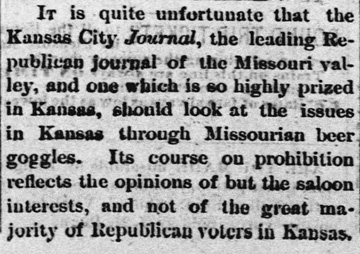BEER AND WINE LINKS 03.19.18
30 of the (Best?) Cheap Macro Lagers, Blind-Tasted and Ranked.
Long ago, pitching an editor to keep his own Pocket Guide to Beer series alive, Michael Jackson characterized James Robertson’s books (such as the Great American Beer Book, published only a year after Jackson’s World Guide to Beer) as derivative, which I think was unfair. His “great experiment” included very organized tastings that drew from a diverse group whose members scored beers on specific criteria. And they used the full spectrum when evaluating beers, so flipping through one of Robertson’s books with scores and finding a beer that received a 17 is more common than one that received 92.
Originally, 90 was the highest score possible (if all six tasters gave a beer 15), but Robertson later converted the numbers to a 100-point scale because, well, that’s the American way. The Beer-Taster’s Log included more than 6,000 tasting notes — remember that in 1995 there about 800 breweries in the United States, compared to more than 6,000 today. It is a fascinating resource, and not only because it rates four different vintages of Harley-Davidson Heavy Beer (27 in 1993, a great disappointment compared to 53 in 1990).
Anyway, the notes for Hamm’s: “Bright gold, pleasant malt nose, off-dry malt flavor, short malt aftertaste with some hops in back, pleasant hot weather quaffing beer. [53]”
For the sake of comparison, scores for the other top-rated beers in the Paste tasting: 2. Pabst 50, 3. High Life 64, 4. Genuine Draft no score, 5. Miller Lite 48. Also for sake of comparison, some other scores: Budweiser (from A-B) 63, Bud Light 36, Michelob 74, Sierra Nevada Big Foot 49 in 1988 & 91 in 1991, Anchor Steam 63, Anchor Liberty Ale 86. Oops, I seem to have wandered away from the cheap macros.
But in case you are curious, the highest scoring beer in GABB in 1978 was Prior Double Dark from Christian Schmidt, with 87 (out of a possible 90). Hamm’s merited 45 and this note: “Pale color, light malty aroma, clean and pleasant tasting but a bit dull; the slightly bitter finish is the only evidence of hops.”
A Brief History of “Beer Goggles”
Before Playboy made the term what it is today it seems there was a opportunity for a reporter to use it as a clever turn of phrase in political discussions.
From the Mansfield (Ohio) News Journal in November of 1915.

And even earlier, from the South Kansas Tribune (Independence, Kansas), in 1882.

What (and where) is a Beer Garden?
Host Tom Cizauskas has announced the topic for The Session #134 is Beer Gardens.
Is a beer garden to be found outdoors, or can it be, alternatively, an interior third place, an arboretum with beer? Is a beer garden a real thing or is it a Platonic ideal, an imagined gueuzic nostalgia? Or is it a place indeed, once or often visited, not Bill Bryson in the woods, but Lew Bryson in a beer garden? If so, where is it? Tell us (with or without Lew).”
Background reading: Schnaider’s Beer Garden.
MORE BEER; JUST THE LINKS
– Blind tasting Pils for our local.
– An Unholy Fight Over a Saintly Beer.
– People would rather buy beer cans than visit pubs.
– Jim Koch Literally Only Drinks Boston Lager.
WINE
The Wines That Made Us (9): Blue Nun.
I can’t resist this series, maybe because the posts make it easier to confess to drinking some of these wines long ago without being quite so embarrassed.
The complications of language and labelling were just part of an eventual triple whammy on German wine. It’s hard to be a popular success if ordinary folk can’t understand or pronounce the words on your bottle. And for a generation raised on Commando comics, German wines sounded a little too much like barked instructions to present your papers.”
OFF TOPIC, OR IS IT?
How Do We Keep Bias Out of Stories?
Eleven days ago Alan McLeod commented on reliable reporting. Here’s how ProPublica approaches the challenge.
As I dug through records and did interviews, I looked for evidence that knocked down or mitigated our premise. Every reporter should seek out facts that might produce a counternarrative. You don’t want to have tunnel vision.”
FROM TWITTER
A thing I heard this week that has really been staying with me: "If it's clear it's not craft."
— Erik Lars Myers (@topfermented) March 16, 2018